How are glasses supposed to fit on your face?
An ill-fitting frame will not only affect the comfort and look of your glasses but can very well compromise the performance of your glasses. Knowing how glasses are
Often small tweaks have to be made to ensure proper fit after the glasses are received but picking the right size will be a very helpful starting point.
Issues that you can have like glasses slipping down your nose — when you look down even slightly, pinching your nose — or you feel like you are carrying a load on your nose, or pressing your temples, or the nose-pads cutting into your skin?
Small details that can, for the most part, be avoided by picking the right sized frames.
Start by looking at the width of the frames :
- Looking at your face you determine if the frames sit comfortably on the tops of your ears and nose but with the right — should be about 1/2″ — 3/4″ spacing from your temples to the temples of the frames on each side.
Looking at the image below you will see the:
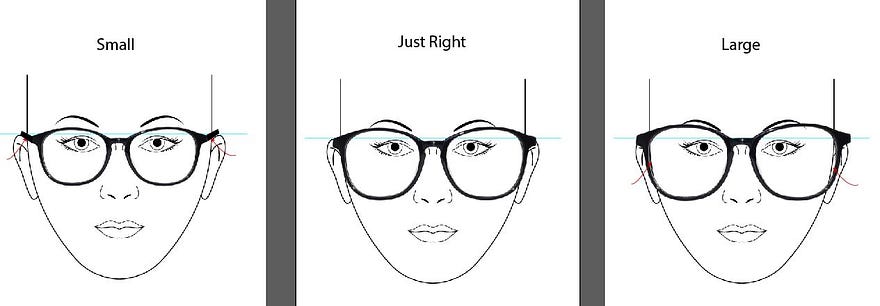
- 1st picture has a smaller frame where looking straight on you can see the temples from the frames flaring out. This could lead to discomfort on the temples from the frame arms pressing on the side of the face, indentation on the side of the face and just plain doesn’t look good!
- For progressive glasses, the reading portion or the focal point may end up being too high as the glasses will be raised off from the right position which is sitting gently on the nose
- On the 2nd picture, you can see the frames are centred perfectly. This ensures a good fit on the whole for the average face.
- 3rd picture ( and I must say that this is also predicated on personal taste as the large sized frames are very “in” right now) the frames are so big, you can actually see the outside lines of the face from inside the lenses. This can lead to problems with the frames staying put (they may tend to fall off a lot), they will tend to be bigger on the whole for the average face as the measurements are often standardized — if this is a large size the temples and bridge will also be large. This can also be a reason why the prescription might be off especially for progressives as the focal points will be too low.
~When the frames are too wide or too narrow you might find that leads to more problems with the glasses ~
The Lenses Height and Width of Your Glasses:
Keeping in mind that the lens must fit within your face proportions you want to think about how deep the lenses will go down your face.


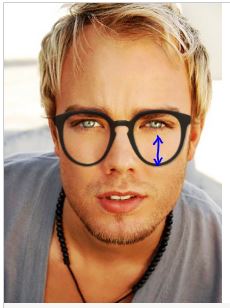

As you can see with the image from a “virtual try on” above the sizes of the lenses of different frames.
Especially, for progressive prescriptions, it’s important to take into account the size of the lenses and how they will affect the access for your eyes of the “reading portion” of the lenses or the segment height.
- Picking a frame that is too different in size from your current frames will require time to get used to.
- The bigger the lenses height is the lower the reading portion of your glasses will be.
- The smaller the lenses height the higher the reading portion will tend to be.
To counter this you will have to make a good estimate based on the glasses you know wear and measure from the bottom of the frames to the centre of your pupils to get the segment height based on the frames you are wearing. Then translate this to the frame size you are about to pick. This should give you a good idea into how these glasses will work for you.
The Temple Length of Your Glasses
This will determine:
1. How close the frames will sit to your face —
- If temples are long farther they can sit or will slip off your face often (the temples could be irritating if they are also very long down the back of the ears.)
- If the temples are too short (look out for this) then they will be too close to your eyes OR push against your temples in an effort to reach around your temples to your ears
Either of these options will most likely be uncomfortable and could very much affect your vision
Ideally, the frame should not touch the face before the hairline so that the grip is at the ear point and not before. There should be about 5mm or so of space from your temples to the arms of the frames.
You see the frames below are bowing in because they are stretching out to reach the ears as they are way too small.
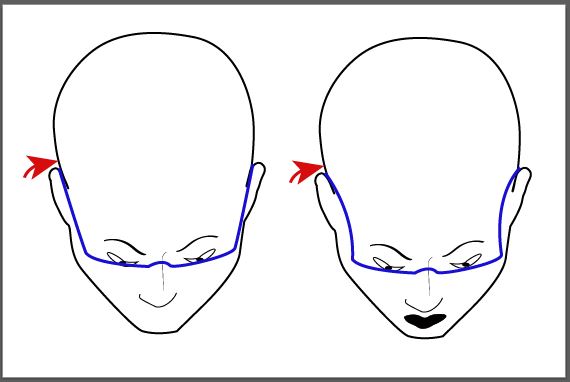
2. The tightness or looseness of the frames —
- With a curve at the back of the ears you can make them looser or tighter (further or closer to your face)

As you can see the temples are very straight with not much curve — this will give you the chance to further customize the fit if you need to by curving the ends closer around your ears and letting the frames get closer to your face or to stop them from falling off your nose.
- A better fit would have a slight inward angle, temples just sitting comfortably with the bend beginning at the ears.
- The bend of the temples should also start at the ear so that there is no pulling effect and no discomfort.
To get the right measurement for your temples
Measure or inspect your current frames (don’t assume it’s correct sometimes we have gotten used to the discomfort and made that the norm) to be sure there is no pulling if not use the temple measurements indicated on there.
In the case where you can’t read/see the numbers on the frame you can measure
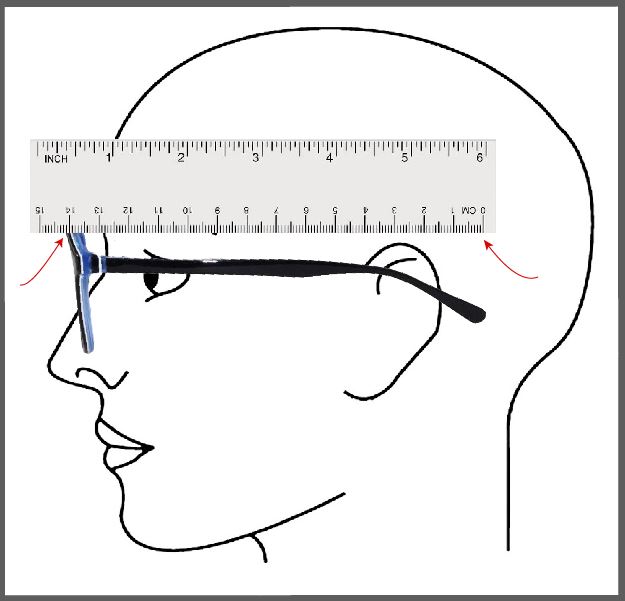
The Bridge on Your Glasses
You have to understand the type of nose you have. Do you have a high bridge, low bridge, a big nose, a small nose?
If you prefer metal frames it’s generally much easier to manipulate the nose pads than with plastic frames that have built-in nose pads. For this reason, it’s more important to get the right size bridge on plastic frames
- If the nose bridge is too small the glasses will sit too high on the face.
This is not something everyone knows so here’s a quick primer on noses 🙂
Taking a quick selfie profile will help you determine if you have a high or low nose bridge.
- If your bridge is low (level or below your pupils), your bridge size will be a smaller number.
- If it is high (above your pupils) or if it is wider than average, you will need a larger bridge number (18mm+)
Also, take a quick peek at the location of the bridge on the frame.
- If you have a high bridge, frames with a bridge closer to the browline are better for you!
- If you have a low bridge, frames with a curvier brow or a lower bridge would be a better choice.
- But some lucky folks have just the right bridge that looks great with any type of bridge!
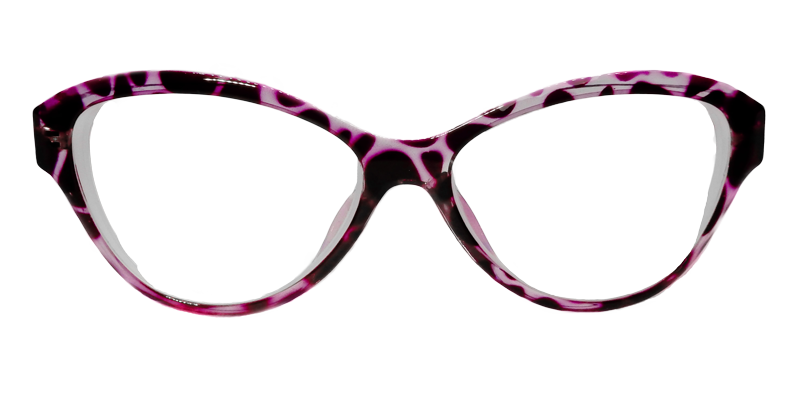
Perfect for a high bridge
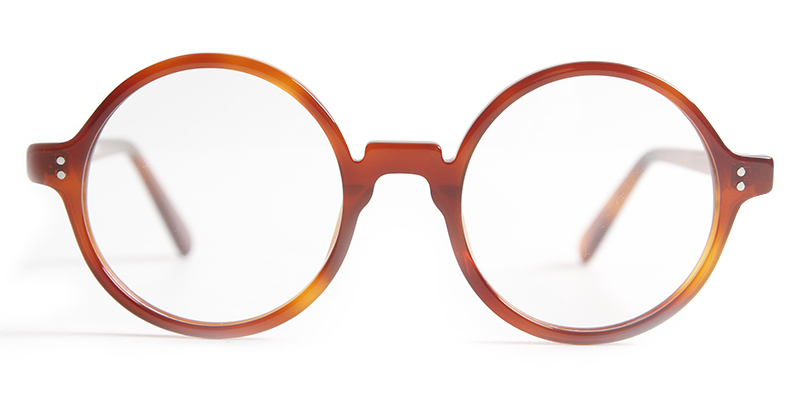
- For small bridges look for sizes 15mm-17mm
- For medium bridges look for sizes 18mm -20mm
- For large bridges look for sizes 20mm — 25mm
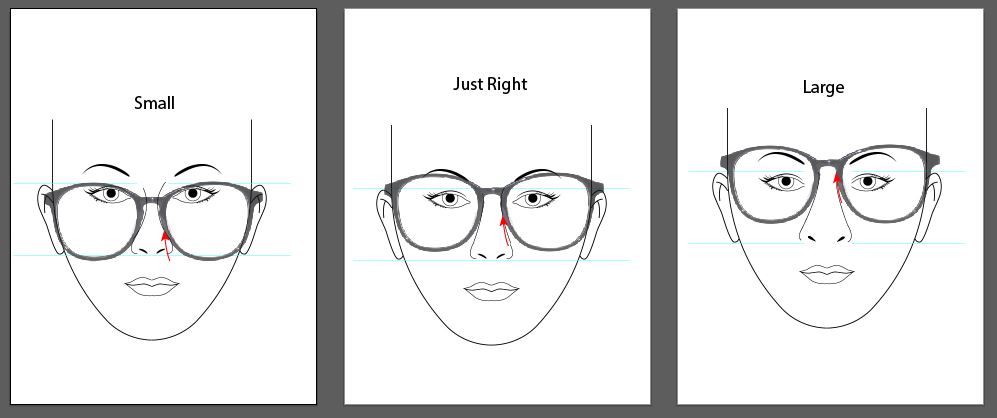
In Conclusion
- If your nose bridge is too wide for the glasses then you will find that the glasses are perched really high on the nose and will look awkward (your glasses should be below or in line with your eyebrows not above), and the prescription, especially if it is progressive, is sure to feel off — as you now have the wrong focal point on the glasses for the reading/middle/distance portions of the glasses. As they graduate towards the bottom of the lenses you will have maybe the middle portion in line with your eyes and this is not the distance section so it will be uncomfortable when you are looking in a distance. The same is true for bifocals the reading part will be too high impeding your ability to see through the distance portion.
- If your nose bridge is too narrow for the glasses then you will find that the glasses are perched really low on the nose and are prone to falling off. For progressive/bifocal lenses this will make it very hard for you to access the reading portion of the lens as they will be too far down to simply look down into.
Paying attention to these details and following these steps will save you from discomfort and misery in the long run. No matter how awesome you look in your new glasses, poor vision, a headache, a sore nose or ear will stop you from looking and feeling your best.
Experience and know how = prescription eyeglasses that are priced right. Take it from me you can have your style your way – every day! See the world with insight


